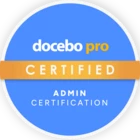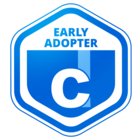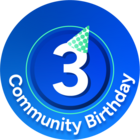Hi, I’m Ryan Woods, Docebo’s Course Developer. I spend most of my work hours designing the content you see in Docebo University, so I do a lot of thinking about how to engineer training that’s engaging, effective, and useful.
Because so many community members are strategizing learning materials day in and day out, I thought I’d kick off a conversation talking shop. Here are 4 considerations I always entertain before developing training content. I’d love to hear more about what you do to make your content work for your learners, so don’t be shy!
******************************************************************
Ever wonder why a course you’ve created doesn’t engage users like you’d hoped it would? Do learners not acquire the skills they need, even though you presented all the information they need to develop proficiency? How do your courses fit in your learning ecosystem? ![]()
These questions vex instructional designers, course developers, and learning content experts. While there’s a lot of great information out there addressing these challenges, here I’m going to share what’s worked for me.
1. Start from the end, not the beginning.
Coined “reverse design” (or “backwards design”) by its proponents, this approach begins by asking, “What should learners know and be able to do by the end of this training?” Once you’ve answered this question, shape your content around reaching these objectives. Don’t be afraid to cut sections, activities, and lessons that don’t support these goals. You’ll streamline your course creation this way. ![]()
2. Know your audience.
Are you authoring a course for employees, customers, or partners? Are your learners familiar with a technical process, or will you need to explain and demonstrate it? Where are your audiences in their learning journey? In what contexts will they be accessing your training?
Getting clear on your audience’s needs will help ensure you’re delivering meaningful content that feels relevant. You might begin by creating learner personas ![]() (here, some of your best resources are from marketing templates for charting out customer journeys) and mapping out learner journeys.
(here, some of your best resources are from marketing templates for charting out customer journeys) and mapping out learner journeys. ![]()
3. Understand your media.
You should select media that best communicates your message. The media you leverage -- whether a quiz, an interaction, a demo video, an observation checklist, or other object -- must reflect your content goals and your learning audience’s needs. Choose wisely. ![]()
![]()
![]()
![]()
4. Measure what counts.
How do you continuously improve your learning culture? ![]()
Such a multifaceted question deserves a multifaceted answer, and we don’t have the space to elaborate here.
But measurement has to form a part of any strategy for making progress. Why? Well, without it, you can neither prove the impact of your learning, nor improve what’s there. ![]()
A good place to start is by applying criteria suggested by the Kirkpatrick model to your course. Given the goals you and your audience have, how would you measure the reactions, learning, behaviors, and results you hope to drive with your content?
Were these recommendations helpful? What would you add or change? Let me know in the comments. 








